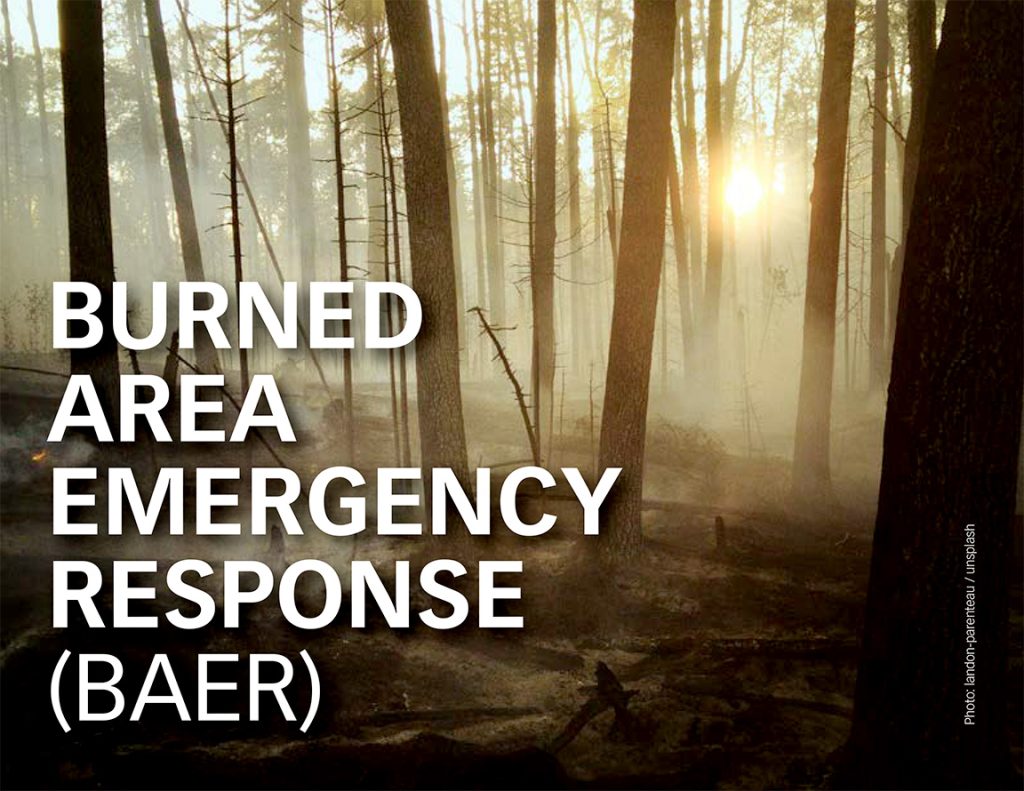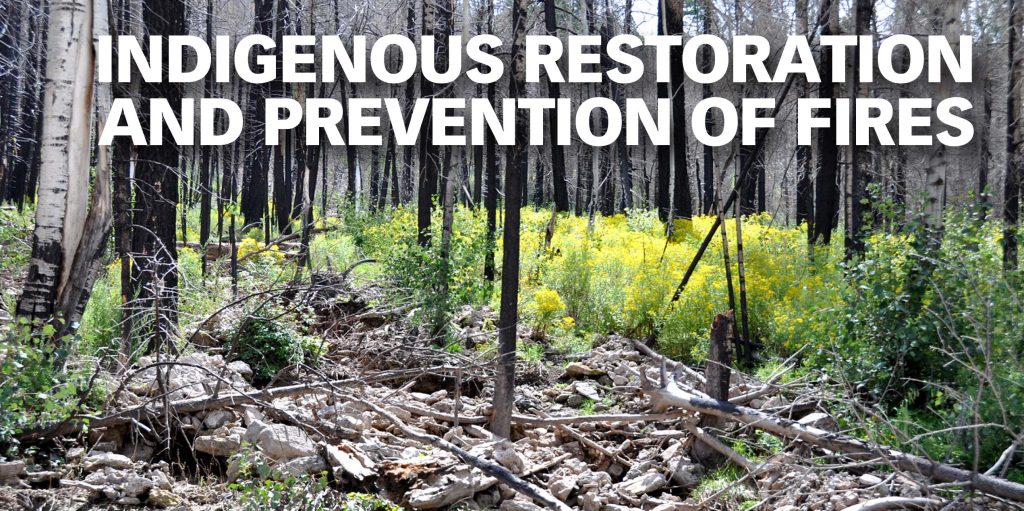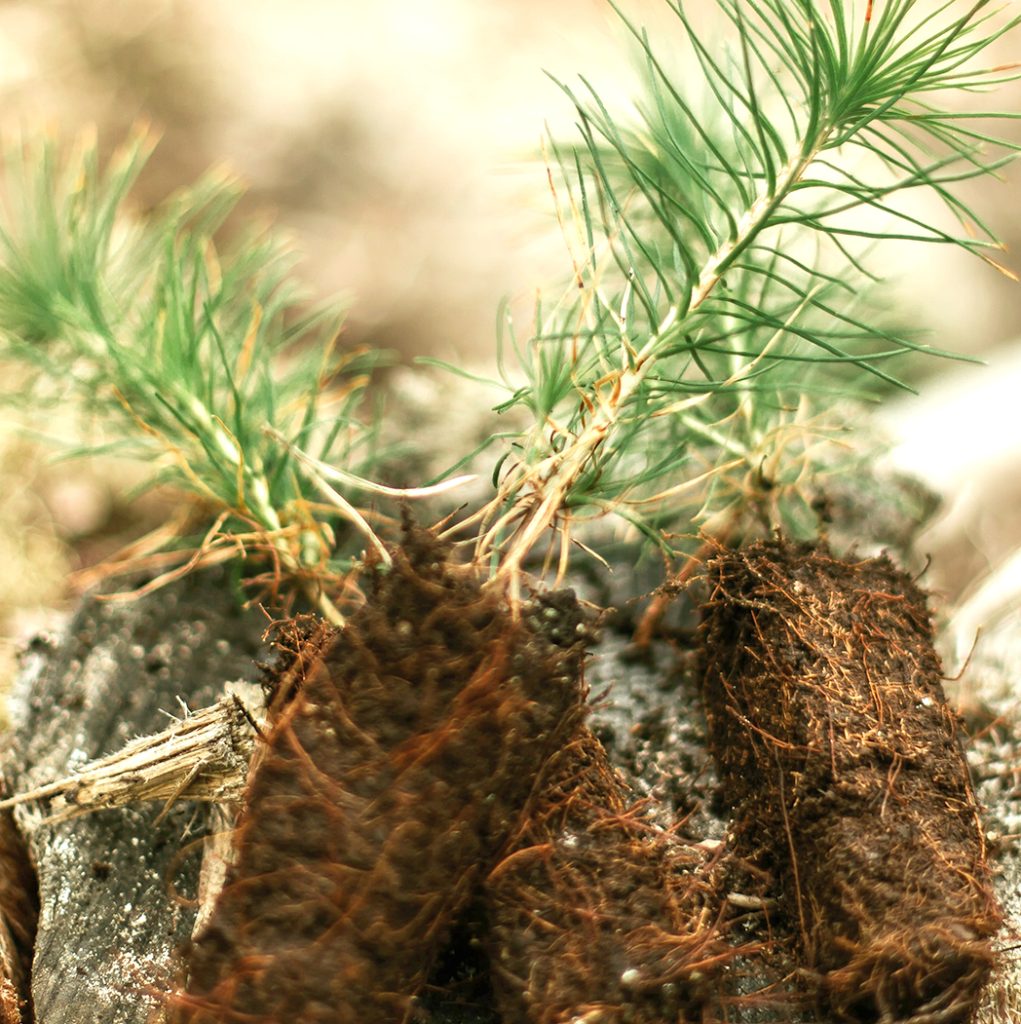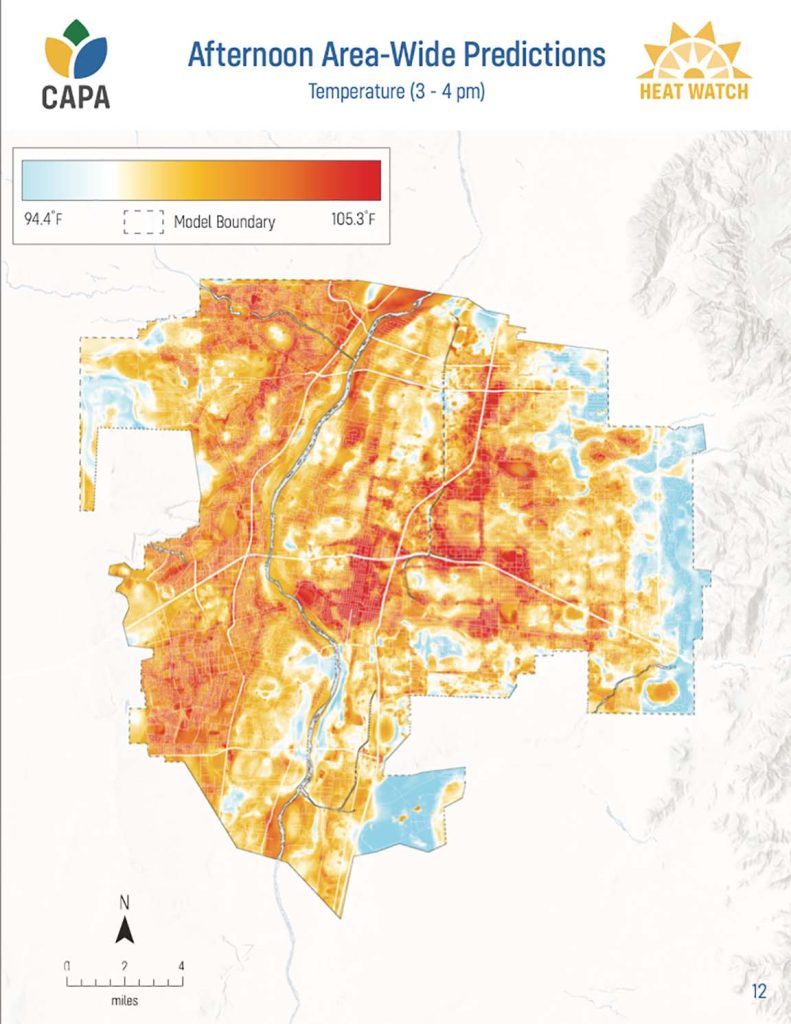
The past few months, most New Mexicans have been focused on our state’s two huge forest fires, the Hermit Peak Calf Canyon fire near Mora and Las Vegas and the Black fire in the Gila. Here in the mid Rio Grande, we are at risk for fires in both the Sandia and Manzano mountain ranges. Fortunately there have not yet been fires in our district this year, but forest fires farther “upstream” also affect the mid Rio Grande. For example, the Las Concho fire in the Jemez Mountains in 2011 turned the draining river black from ash, and the river carried that ash into the Rio Grande. And this is only one of the potential environmental impacts a forest fire can have long after it is contained. In this article, we explore how the National Forest Service (NFS) responds to the emergencies caused by the aftermath of a forest fire.
The Federal government has a post-fire emergency response, the Burned Area Emergency Response (BAER), designed to address problems on Federal land which pose a threat to human life, safety, property, or crucial natural or cultural resources. The BAER team assesses, prescribes, and develops a plan to minimize risks post-fire to stabilize soil and control water, sediment, and debris movement. “The public and communities adjacent to and downstream from wildfire areas should expect increased flooding and debris transport during less than average rain events,” according to the NM SW Region BAER safety message. This warning could easily be in effect for several years after a fire.
The BAER team is made up of hydrologists, soil scientists, engineers, biologists, botanists, archeologists, and others. Their assessment usually begins before the wildfire is totally contained. There are three phases to wildfire recovery: 1) Repair of the dozer fire lines, roads, trails, staging areas, and drop points used during fire suppression efforts (NFS responsible); 2) A plan for emergency stabilization of the burned area with recommended actions such as the installation of erosion and water run-off control structures, mulching, and seeding (NFS responsible); 3) Long term recovery, which can include restoring burned habitat, reforestation, and replacing burned fencing (the responsibility of coalitions of state and community organizations). In most cases, only a portion of the burned area is treated by the NFS, prioritizing steep slopes and places where water run-off would be excessive. Restoration of a “hot” fire is more hazardous; hardening the soil surface so water doesn’t penetrate and burning tree roots creating hidden holes in the terrain.
The BAER assessment and plan must be developed within 7 days of total containment of the fire and submitted to the regional forest service office. The plan can be approved by them or, if it exceeds the limits of local authority, it is forwarded to Washington DC. Approval means funding is made available quickly for purchasing materials and contracting out services since soil stabilization and control of water runoff is critical before major storms occur.
But what help is available for restoration if the fire scorches private land?
Continue reading




